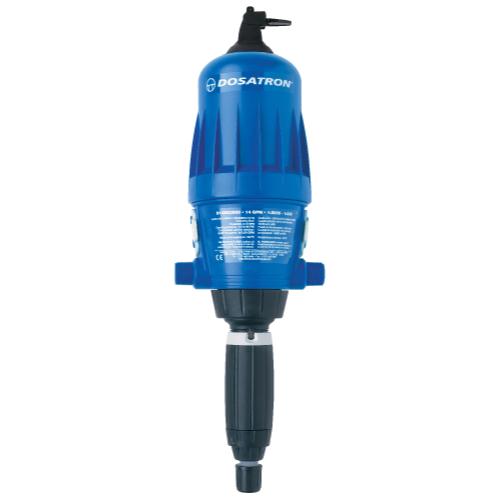Featured Plant Profile: Mexican Chia
We’re busy developing and expanding our Phytotheca Plant Library, and in doing so we’ve learned a TON about edible and medicinal plants. We’ve also learned how overwhelming all of the choices and knowledge can get when planning your garden, menu, or next indoor growing adventure. So we will be featuring different plants here in our blog to ensure you don’t miss a thing!
Right now, Chia has become kind of an important plant in my life. I first heard of it as a food when reading Born to Run by Christopher McDougall, back in 2010 or so. I’ve not tried to grow it yet, though with all the information I found while researching Mexican Chia, I am now a lot closer to realizing that potential!
One important thing to know about this annual mint family plant is that, because of its adaptation to the tropical conditions of its native range in Mexico, most types only start to flower and make their nutritious seeds in the fall, once day lengths are beginning to shorten. Unfortunately for us temperate climate growers, this coincides with the start of fall frost season, which will damage or kill the plant before the seeds are ready! Bummer. Luckily, breeders in Kentucky are working on some new strains which will have earlier blooming times, while days are still long.[1] These advances will help to bring cultivation of this food further north, which is great as it gains popularity in the United States and other western food markets. Demand for this seed is shooting through the roof, while drought conditions in the current growing areas of Central and South America could produce strains on the market.[2]
 Another good option to consider is indoor or greenhouse growing if you’re trying to get seeds. If you’re able to protect plants from the cool weather, they should flower and develop seeds in the fall in any climate. As another option, you can grow sprouts or microgreens. Use a moistened well-draining soilless medium like coco coir and scatter seeds on the surface. Water regularly once germination has begun and grow under good lighting to keep these baby plants nice and green. Harvest either once seed leaves have emerged and shed the seed husk, or after the first set of true leaves have appeared, giving them enough light to grow green leaves and prevent leggy, weak stems. Eat your bounty as soon as you can, since they don’t store well.
Another good option to consider is indoor or greenhouse growing if you’re trying to get seeds. If you’re able to protect plants from the cool weather, they should flower and develop seeds in the fall in any climate. As another option, you can grow sprouts or microgreens. Use a moistened well-draining soilless medium like coco coir and scatter seeds on the surface. Water regularly once germination has begun and grow under good lighting to keep these baby plants nice and green. Harvest either once seed leaves have emerged and shed the seed husk, or after the first set of true leaves have appeared, giving them enough light to grow green leaves and prevent leggy, weak stems. Eat your bounty as soon as you can, since they don’t store well.
A surprisingly large number of people have been curious about what, exactly, it is that I’m drinking, sparking good conversations about food and healthy eating. I recommend you go get some chia seeds today and try a new dietary experiment.
My favorite way to eat the seeds is to mix them in with water, lime juice, and a splash of apple cider vinegar. Sometimes I will add a pinch of ground cayenne pepper as well. This makes a goopy, gelatinous mixture that is delicious to drink as breakfast or as a snack throughout the day. I’ve been carrying a jar of it around during my outdoor adventures rock climbing or hiking, and it really does offer a boost of energy that keeps me from crashing during a long day of demanding physical activity. They also keep your body hydrated by holding something like 9–12 times their original weight in water. Obviously this is very important in the dry Colorado climate.
 [icon name=”book” class=””] Be sure to keep checking back in for more in our Featured Plant Series to quickly guide you through our favorites of the coolest, easiest-to-grow, or most interesting plant varieties we’ll be hand selecting for you.
[icon name=”book” class=””] Be sure to keep checking back in for more in our Featured Plant Series to quickly guide you through our favorites of the coolest, easiest-to-grow, or most interesting plant varieties we’ll be hand selecting for you.
Sources:
University of Kentucky Center for Crop Diversity – Chia
Chia boom: With 239% growth, chia category set to hit $1 bn by 2020. By Stephen Daniells, 22-Nov-2013




 Depending on where you live, you can generally make a good guess as to how much natural precipitation you are going to get during the summer.
Depending on where you live, you can generally make a good guess as to how much natural precipitation you are going to get during the summer. will have the freedom to hand pick the soil that you are going to be working with. In order to make the most accurate choices, you will need to select your plants first, so feel free to skip to Step 3.
will have the freedom to hand pick the soil that you are going to be working with. In order to make the most accurate choices, you will need to select your plants first, so feel free to skip to Step 3. 






